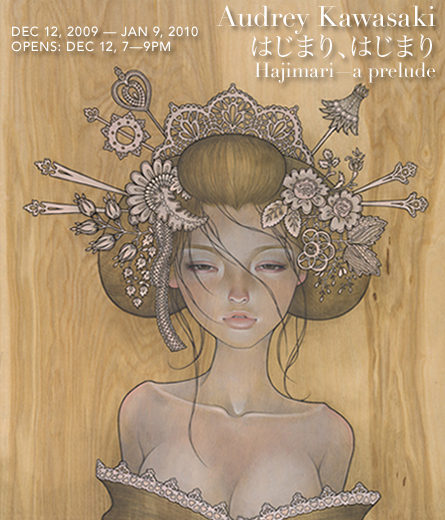
Here are a mix of in-progress works from artist Audrey Kawasaki for her Hajimari show which opened last weekend at the Jonathan Levine Gallery in New York. I like Audrey's work. It's obvious that anime and manga influences her work, but notice that none of her characters are smiling. How Audrey captures their expressions in a dream-like state that evokes melancholy and sadness... but not in a bad way. Whereas all of her characters could be described as "cute", her work has an edge to it. I especially like the incorporation of Yokai and the skulls and skeletons. It provides a nice juxtaposition to the perfect cute little girls.
Audrey Kawasaki
Hajimari—a prelude
Gallery I
Solo Exhibition
Opening Reception - Saturday, December 12th, 7-9pm
December 12, 2009 through January 9, 2010
NEW YORK, NY (November 12, 2009) — Jonathan LeVine Gallery is pleased to present Hajimari—a prelude, new works by Audrey Kawasaki, marking her highly anticipated debut solo exhibition in New York. This new series includes paintings on wood panel, and some on paper, all of which feature the artist’s signature, sultry female subjects. By applying thin washes of oil paint onto wooden panels, accentuated by organic lines drawn with graphite, Audrey allows the natural grain of the wood surface to show through her imagery which adds translucency to the subjects and a warm glow to every curve and contour of the female form, enhancing the overall ethereal effect.

The works in this show make subtle references to Audrey’s heritage. The show title Hajimari means beginning in Japanese, and is a word often used in the introduction of a story. Although it is a theme she does not typically explore artistically, Audrey has always felt strongly rooted in two distinct cultures. Born and raised in America, with parents from Japan, she has been immersed in Japanese culture her entire life. Deeply connected to each of the two, she feels both cultures are very much a part of her personal identity. After revisiting Japan twice in 2009, with some nostalgic experiences and self-reflection, the artist decided to introduce some traditional Japanese elements into her work such as: kimonos, architecture, folklore, and symbolism. Audrey has also begun to incorporate more of an environment or background setting into many of these new compositions to complement her figures, which—in previous work—have normally appeared isolated within the visual plane.
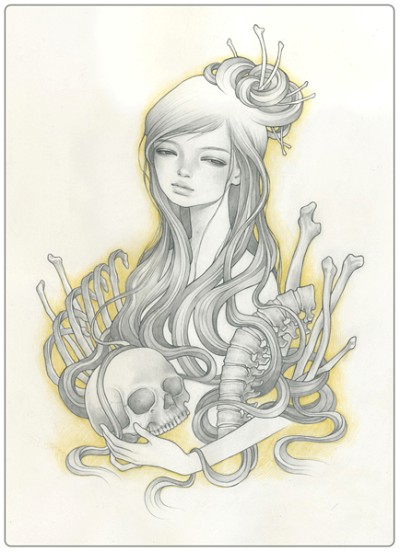
Audrey considers the art of Japanese Manga comics to be one of her earliest creative inspirations. She is also heavily influenced by the highly stylized and flowing curvilinear forms found in Art Nouveau—a movement the origins of which happen to have been partially derived from the flat-perspective of the Japanese woodcut tradition. The influence of both styles can be found in Audrey’s use of organic forms, focus on the natural world and human sexuality. Contradiction is a concept that also plays an important role in Audrey’s provocative subject matter. The paradox of identity in the perception and allure of the unknown is what lies behind the direct gaze of her subjects—who remain a constant mystery, even to Audrey. Other issues include: coming of age, social pressure, inner-conflict, innocence, sexual maturity, idealizing, idolizing, femininity and desire.
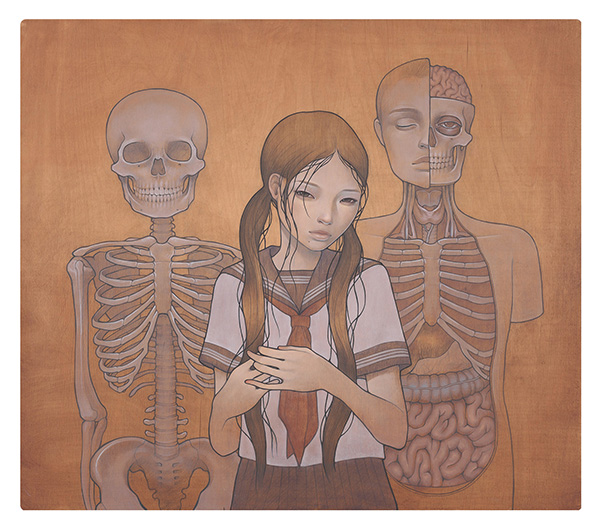
ABOUT THE ARTIST
Audrey Kawasaki is a Japanese-American artist, born and raised in Los Angeles, where she currently lives and works. Kawasaki’s work contains contrasting themes of innocence and eroticism, conveying the mysterious intrigue of feminine sensuality. Her sharp imagery is painted with precision onto wooden panels, the natural grain adding warmth to her enigmatic subject matter. The artist’s creative influences include eastern as well as western traditions such as Art Nouveau and Japanese Manga comics. She paints sultry, seductive and uninhibited female subjects with delicate beauty and provocative, direct eye contact. Their graceful gestures and ghost-like features carry mysterious expressions of melancholy and longing.


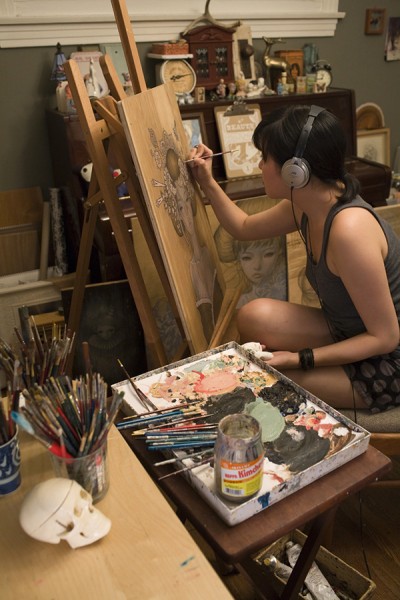
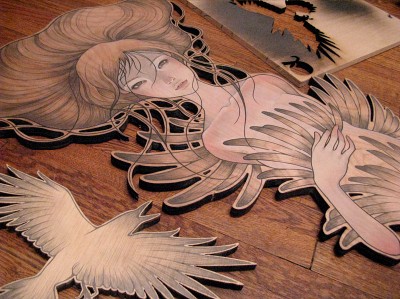
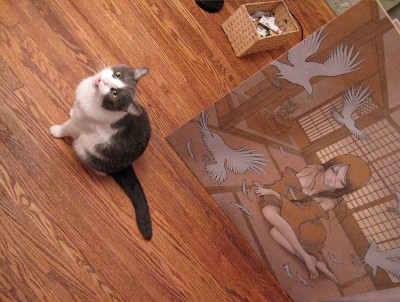
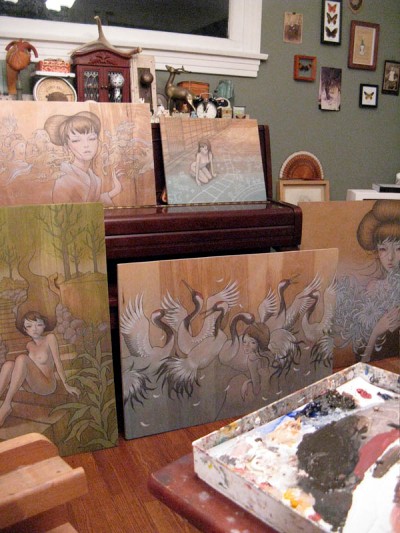
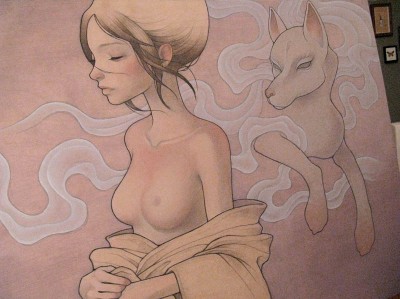
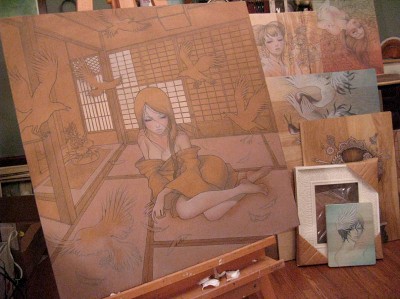
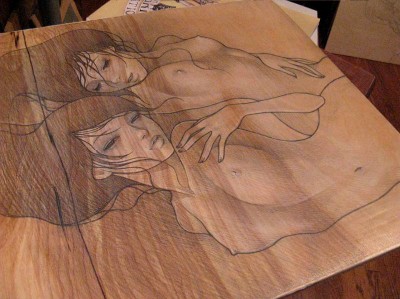
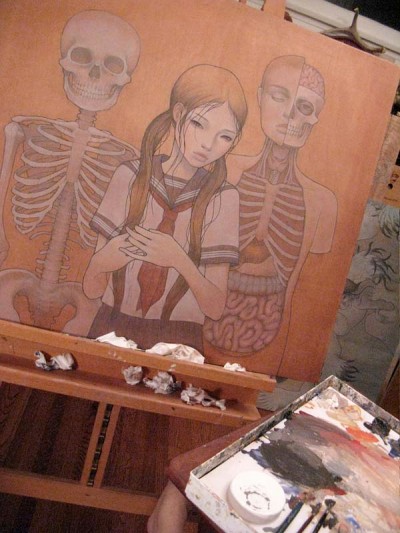
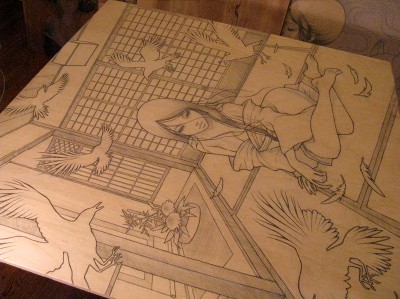
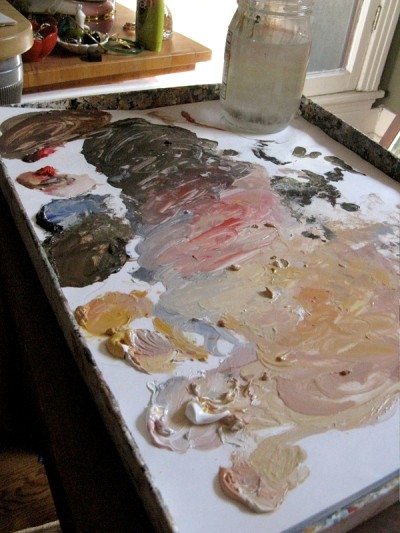
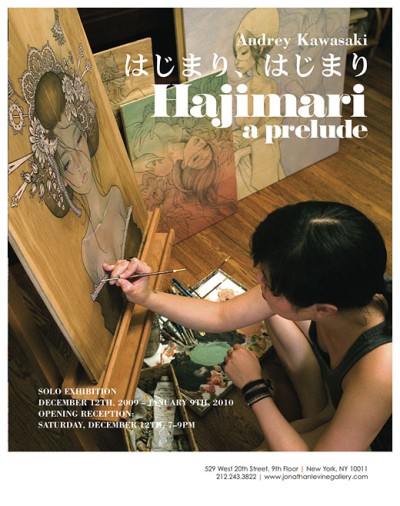










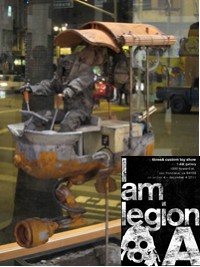


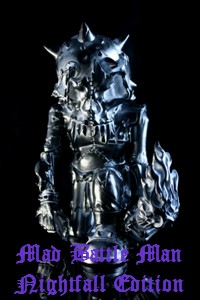


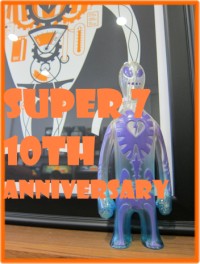
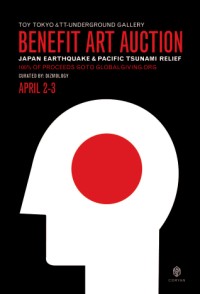


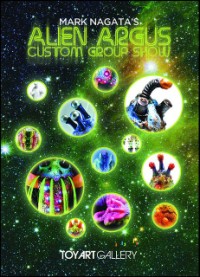
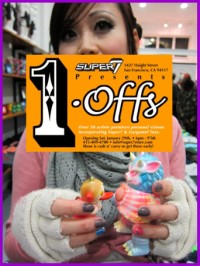








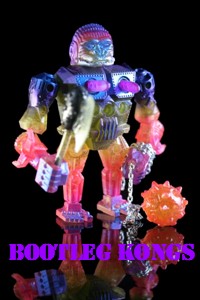
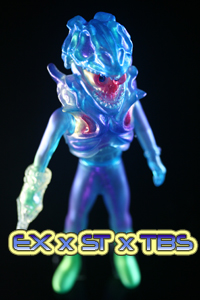

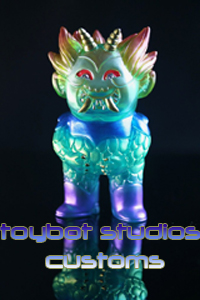

































































No comments:
Post a Comment